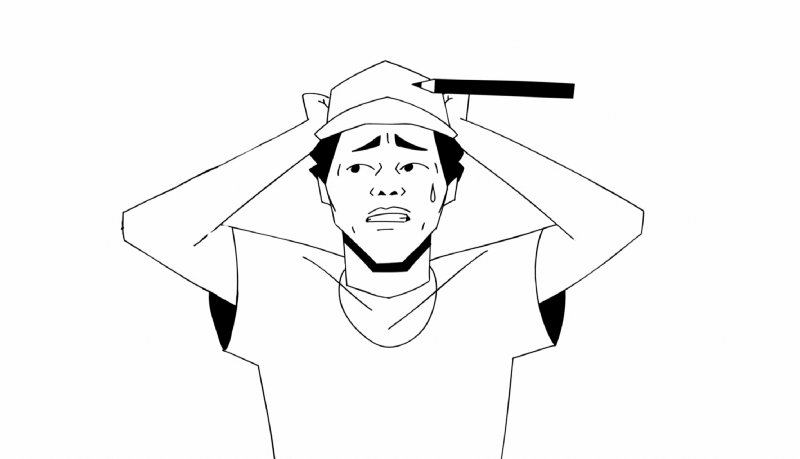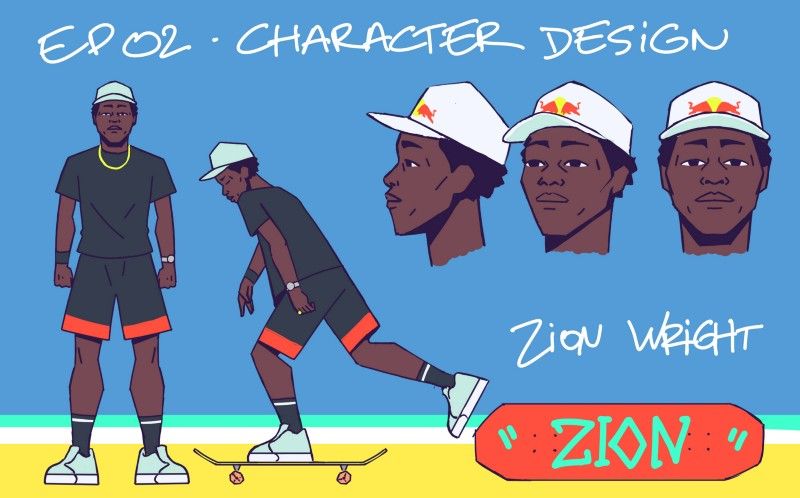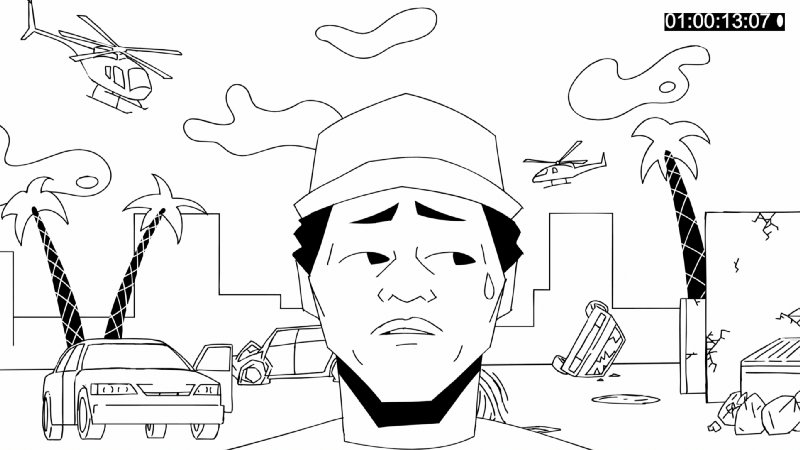How Red Bull Is Partnering With Freelancers To Power Its Creative
Glimmer freelancer Jason Beauregard shares how he’s become an “extension” of Red Bull Media House.

We go behind the scenes with New York City-based Glimmer creator and Executive Producer Jason Beauregard on how he’s become an “extension” of Red Bull Media House.
Who is the brand?
Austrian company Red Bull is known for its energy drinks and sponsorship of sporting events and teams. They launched Red Bull Media House in 2007, a company dedicated to telling stories that build their brand globally. Red Bull Media House focuses on sports, culture, and lifestyle content across TV, mobile, digital, audio, and print and has tapped into the Glimmer platform to find creative professionals to execute their vision of inspiring with “beyond the ordinary” stories.
Who are the freelancers and how did they land the gig?
New York-based Executive Producer Jason Beauregard has worked for clients like Meta and Lightricks. He attributes his accomplishments to his “brand-focused storytelling acumen’’ and “unique ability to drive strategy end-to-end.”
“There are other ways to use Glimmer effectively and not do any of the work. They have to make one phone call and then somebody else does that work for you.”
Jason is part of Glimmer SELECT, our white-glove service that connects an elite group of producers, directors, creatives, and production companies with brands, agencies, and media companies on larger global projects. The Glimmer team presented Red Bull with SELECT producers who matched their project needs.
“One thing that some people on the brand side or even agency side is apprehensive of is that they have to do all the work, they’ve got to put the ad up, they’ve got to call, to vet all of these people on Glimmer,” Jason said. “There are other ways to use Glimmer effectively and not do any of the work. They have to make one phone call and then somebody else does that work for you, which is me.”
Jason presented Red Bull options for editors, animators, colorists, and sound designers “and then they just say this one or that one.” He added: “It was a very generic presentation of what Glimmer could look like from a SELECT perspective or from a perspective of having an executive producer at the head of multiple projects and running that across Red Bull.”
The team of freelancers Jason put together using Glimmer includes Lead Animator Hugo Louiset in Angouleme, France, Editor Jake Zimet in New York, Colorist Sean Hendersen in New Jersey, and Sound Designer Adrian Yin Michna also in New York.
What is the series about?
In “For Real,” Red Bull shares the “craziest stories” from their athletes, including the “true story behind Max Verstappen’s first F1 win” and “Zion Wright’s unexpected LA skate life.” Red Bull didn’t want it to be just another interview series: They sought to push the boundaries of creative storytelling through animation. And Jason was able to not only bring fresh ideas to Red Bull, but also effectively deliver each episode.
“We’ve all seen stories of athletes sitting in front of a camera and recounting their childhood. The video uses photographs or emotional music and pulls at your heartstrings to get you to connect with the athlete that way,” Jason said. “I think Red Bull thought of this as an opportunity to do something wildly different, using animation to push the boundaries of what we could do to add a different element to a very personal story and make it pretty funny.”
What was the creative process?
At the start of the partnership, Red Bull used to send the fully-edited athlete interview to Jason’s team, who then added the animation. But the brand quickly realized that the creative team needed to be part of the edit to make the production more seamless and stitch together a more powerful story.
Jason told us the athlete stories were both personal and, in many instances, funny. “It became a big collaborative effort between the editor, myself, and the animator to push Red Bull to add humor into the series in a way that they had not thought of before.”
In this way, Jason and his team became an integral part of the creative production process.
“Red Bull will pull soundbites and give us a structure of the story, but as the relationship has grown, we’ve taken on more of the responsibility of doing the creative lifting as it pertains to music selection, putting the story structure together, and how we bring to life their overall vision,” Jason explained. “They absolutely have an overall vision of exactly what they want, but when it comes to the structure of the story and how we get from point A to point Z, that’s on us.”
“I hundred percent know that they understand that there’s a value in using freelance options because the accessibility of freelancers through platforms like Glimmer has become such an asset.”
And soon enough the partnership extended beyond the single series.
“There have been certain times where they’ve reached out to us with specific needs: ‘We’re in the middle of nowhere at this event. And we can’t get anybody to shoot the interview of this athlete. Can you help us out?’"
Red Bull increasingly understood and moved toward adopting an agile creative workforce.
“I hundred percent know that they understand that there’s a value in not having internal resources and using freelance options because the accessibility of freelancers through platforms like Glimmer has become such an asset,” Jason said.
What was the production workflow?
Jason carried the client’s vision through from pre to post production. When it comes to animation, pre-production includes character design, the production phase is adding animatics, and post-production entails shading, coloring and making final changes to the animation.
Character design is all about creating the look and feel of individual characters. Jason’s team takes inspiration from the concept, script, and discussions with the athletes themselves to create a beat sheet.
For example, in an episode of “For Real,” skateboarder Zion Wright “shares the craziest stories from the days of living in sketchy shared houses in LA as he tried to kickstart his skating career into the big time.” If Zion shares how someone trashed his apartment, Jason will use animation to illustrate it. During this stage, he will add a title card to the video that describes what the scene will look like at the end. A video can have anywhere between 50 to 75 cards, depending on the depth of storytelling.

“Those character designs are crucial to getting approved before we set anything,” Jason explained. “The athletes will look at them, they’ll confirm that it’s within their likeness, that they approve of how we’re representing them from an animation perspective.”
The two-week animatic phase begins once everything is approved. In animatics, the designer places static drawings over the fully-edited video. “Sometimes they’ll have some very light, mild animation involved, but it’s black and white,” Jason said. “It’s to give Red Bull a rough idea from a storytelling perspective of what the characters will be doing during the animated sequences.”

The animator then fully brings the character to life and adds color and shading.
It’s difficult to make any changes to the animation at this stage. “It’s not like editing where if you don’t like the shot, you can find another one,” Jason said. “If the client doesn’t like something in the coloring phase of the animation, that’s a redo from the very beginning.”
The finalized video in terms of storyline and animation is then handed off to a colorist to color the interview section and a sound designer who adds sound effects that make the story more impactful.
What was the reaction?
The “For Real” series has seen enormous success with skateboarder Zion Wright’s episode amassing 3 million views on YouTube alone. Red Bull is commissioning more episodes of “For Real” and has also brought Jason’s team on board to work on their US-based series “Idols.”
“We’re doing that series because somebody at the international team said you have to use Glimmer because they’ve done such a great job on ‘For Real,’” Jason said. “That’s a testament to how much they like what we’ve done.”
By Shivan Sarna, Head of Stories
